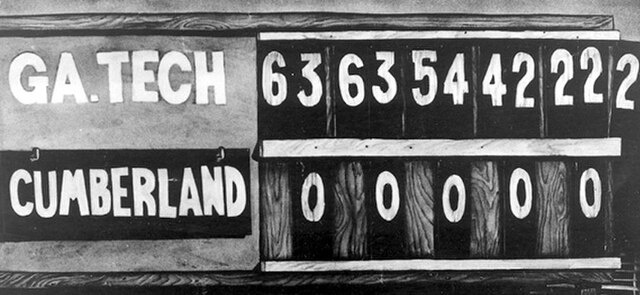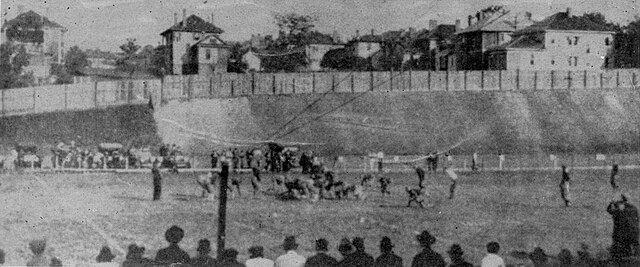The 222-0 Score and the Untold Story: How John Heisman’s Revenge Changed Football
The name John Heisman is synonymous with college football excellence, immortalized by the trophy that bears his name. But long before the annual award, Heisman was involved in a legendary event that permanently scarred one university and inadvertently changed the future of football in the South: the infamous 222-0 thrashing of Cumberland University by the Georgia Tech Yellow Jackets on October 7, 1916.

This historic game, however, is not the simple case of a behemoth running up the score, but a story rooted in an elaborate act of revenge, as meticulously detailed in Sam Hatcher’s book, Heisman’s First Trophy: How the Game Changed Football in the South.
The Precursor: A Baseball Betrayal
To understand the 222-0 score, one must rewind to the spring of 1916. John Heisman, then Georgia Tech’s football and baseball coach, brought his nationally ranked baseball team to Lebanon, Tennessee, to play Cumberland University. George Allen, a quick-witted law student and the manager of Cumberland’s baseball team (a role akin to a modern athletic director), saw a chance to avoid embarrassment. Lacking the necessary talent, Allen traveled to Nashville and secretly recruited several semi-pro players to suit up in Cumberland uniforms.
The ruse worked. Cumberland beat the nationally ranked Georgia Tech squad 22-0. Heisman, realizing he had been duped by players who looked far too old to be college students, was furious. According to Hatcher’s research, Heisman confronted Allen with a vow: “I’ll get you for this.”
Revenge and the Lawsuit Threat
Heisman’s opportunity came that fall. Due to financial hardship and World War I preparations, the Cumberland board decided to drop football for the 1916 season. Allen was tasked with notifying all scheduled opponents but, in a fateful oversight, failed to inform Georgia Tech.
Heisman immediately pressed the issue. He demanded that Cumberland honor the contract or face a civil lawsuit for damages—a sum that would have neared $100,000 in modern money and would have undoubtedly closed the small university’s doors.
George Allen, feeling personally responsible for jeopardizing the school he loved, convinced 14 members of his Kappa Sigma fraternity—many of whom had never played football—to take a train to Atlanta and suit up. Their mission: play the game to save their university.
The Game of Scores and Irony
The result, of course, was the unprecedented 222-0 final score. Georgia Tech scored 32 touchdowns, often without Cumberland ever gaining a first down.

Yet, as Hatcher explains, the game contained elements of dark humor. Heisman insisted on running up the score as punishment, but the Cumberland players, fully aware of their impossible task, showed remarkable spirit. The book recounts stories, often shared at later player reunions, including a moment when Heisman found a player covered in a blanket on the Georgia Tech bench. When Heisman told the player he was on the wrong side of the field, the exhausted Cumberland player reportedly responded, “Yes, sir, I know that. But if I go back to that other side, they’re going to put me in the game and I’d rather just stay over here.”
Heisman’s Real Trophy
Hatcher’s most compelling argument is the game’s unintended consequence. Because the 222-0 score was so utterly shocking, it garnered massive national media coverage—coverage the South had never received. This attention, driven by the sensational score, prompted the press, particularly powerful northern journalists like Grantland Rice, to start paying closer attention to Southern football.
When Georgia Tech went undefeated the following year in 1917, the national consensus media—now aware and engaged—voted them consensus National Champions.
This, Hatcher posits, was Heisman’s first real trophy. It wasn’t the later award named in his honor; it was the national recognition and legitimacy he brought to Southern football, proving that the region’s game deserved to be judged on the national stage alongside the powerhouses of the Northeast like Harvard and Penn. The humiliation of 1916 ultimately led to the crowning of 1917, fundamentally changing the landscape of college football forever.

[…] Unveiling the Legacy: The First Heisman Trophy and the 222-0 Game […]